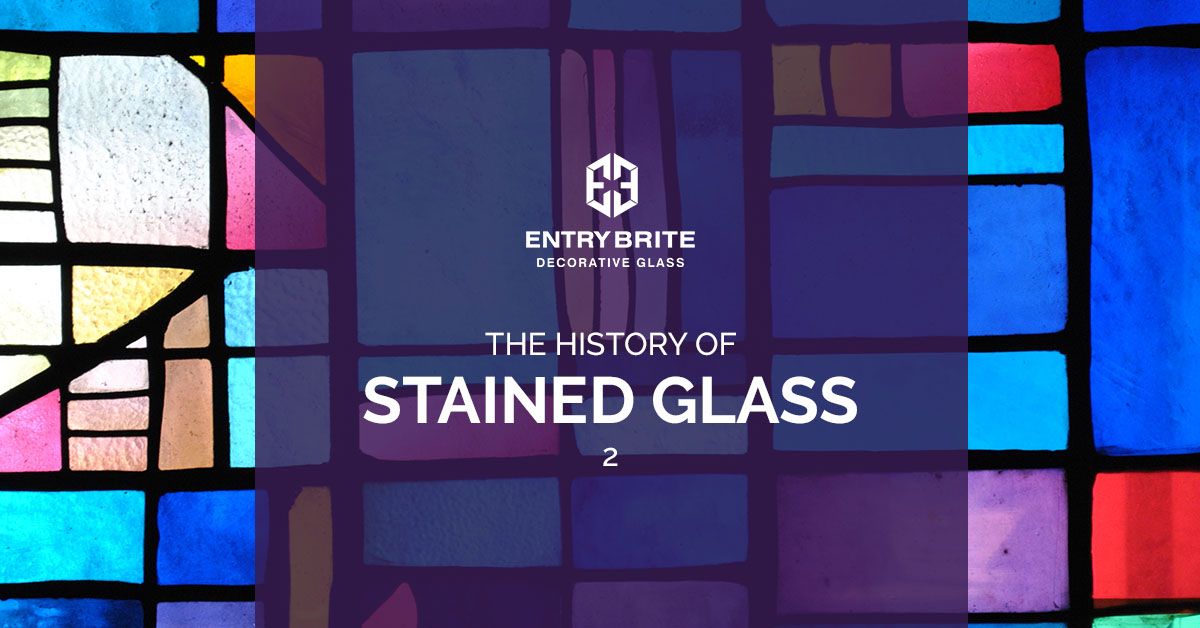Welcome back to our blog series on the history of stained glass. The history of this transparent artform is more opaque than many realize. At Entry Brite in Las Vegas, we are just the latest in a very long line of stained glass artisans. We find ourselves looking back to the great masterpieces of the past for inspiration for our signature stained glass front doors on occasion, and so we thought it pertinent to share the history of our craft with you!
ENTERING A NEW AGE OF ART
In our last blog post, we discussed the early era of stained glass artistry. As early as 2700 BCE, glass makers were making beautiful glass beads in Egypt. Later, Romans began making true stained glass windows and distributing them across their vast empire by the first Century AD. Today, we’ll cover one of the most pivotal and transformative periods of stained glass artistry; the Medieval ages.
Illuminated Glass And Illuminated Text
With the collapse of the Roman empire in the 5th Century AD, many other civilizations began rising to fill the power vacuum. Along with them came new belief systems and structures that influenced how people lived their lives. Christianity rapidly spread across Medieval Europe, and with it came new icons and symbols. The Church became one of the most powerful, and wealthy, institution in the world, and often regional churches were constructed to be far more ornate and regal than the castles and fortresses that were being built alongside them.
Church officials then could afford to commission artisans to create elaborate works of art to decorate the interior of these holy spaces. Stained glass, in particular, was highly sought by Church officials because of its immense value, with ruby colored glass being worth the same as the actual gem. Beginning in the 10th century, artisans began making the amazing works of stained glass art that we now associate with the art form.
Gothic Glass
These works of art were made possible by incredible advancements in the art form. Rather than mixing materials in with the fired sand to make colored glass, artists began physically painting the glass plate itself. The paint was made from enamels that were mixed with rust powder and ground glass that created a sticky and lasting paint.
After the paint was mixed and the glass was painted, the artist began designing the layout of the glass window itself. The artist whitewashed a large table and drew an outline of how the window would look, essentially creating a giant coloring book page.
The artist would then select sheets of glass that were the right color for a certain space, and then carve them out of the glass using an extremely hot iron. To get them to the accurate shape, the artist would use a “grozing iron” that would crumble away the sharp edges of the glass and give it final form. The artist would assemble all of the individual pieces and carefully paint on any remaining details, like faces, ornaments on clothing, or leaves of trees. A lead frame was then constructed around the glass, and lengths of lead were soldered in between the individual pieces of glass to create a stable and rigid plate. Finally, the panel was waterproofed and was ready to be placed in the window frame.
Changing Tastes And Eras
It was the stained glass from this period, roughly the 10th to 15th centuries that would come to define the stained glass artform as a whole. Painting details on already stained glass created amazing works of art and allowed the use of larger pieces of glass and fewer lead separators. The earliest in situ examples of this style of stained glass can be found at the Augsburg Cathedral in Germany.
Despite their detail and extensive use in churches throughout Europe for several centuries, the Gothic method of creating stained glass art would not be the final form of this practice. The Renaissance period would signal the start of new ways to create and use stained glass, and would also see a shift in preferences for stained glass.
In part three, Entry Brite of Las Vegas will discuss this next period of stained glass artistry. We’re excited to bring this timeless art form to your home with our spectacular stained glass front doors. Visit our gallery page to see our modern takes on these classic works.

